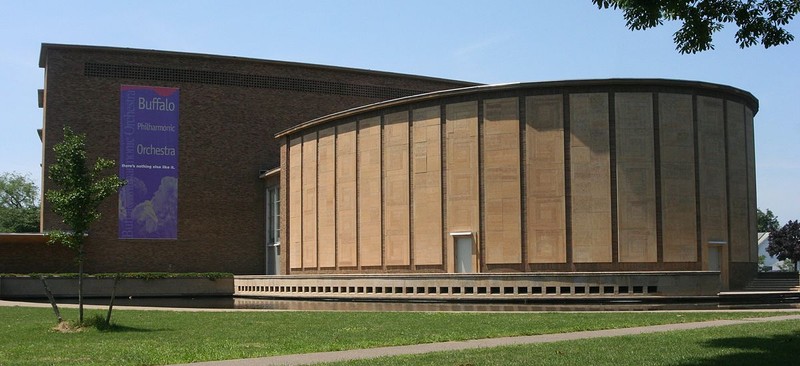Kleinhans Music Hall
Introduction
Text-to-speech Audio
Images
Kleinhans Music Hall opened in 1940 thanks to the generosity of Edward and Mary Kleinhans who bequeathed money for its construction.

Backstory and Context
Text-to-speech Audio
Edward and Mary Kleinhans, owners of the Kleinhans men’s clothing store and residents of Buffalo, New York, were ardent music lovers and felt that the Elmwood Music Hall, which had been around since the late 1880s, was not a suitable location for the performance of music. As a result, they had plans to build a music hall that would be acoustically perfect and would be nothing short of excellent for the community of music lovers in Buffalo. Tragically, both Kleinhans died within three months of each other in 1934, but their desire to construct a new music was fulfilled using the fortunes left behind in their last wills.
Designs for the Kleinhans Music Hall were not submitted for several years until in May of 1938, when the brothers F.J. and William Kidd were hired on as the architects for the project and the renowned architect Eliel Saarinen and his son were hired as design consultants for the project. Construction started soon after, and on October 12th, 1940, the Kleinhans Music Hall opened with the Buffalo Philharmonic Orchestra’s first concert in the hall. The Music Hall was received with a great deal of critical approval, being heralded as one of the most acoustically perfect buildings in the world, a claim that still holds true today. The Hall saw many a famous musician perform there, such as Serge Koussevitzsky and Artur Rubenstein. In 1989, it was both designated as a National Historic Landmark and added to the National Register of Historic Places.
Cite This Entry
Rakes, Zack and Ben M.. "Kleinhans Music Hall." Clio: Your Guide to History. November 22, 2017. Accessed April 2, 2025. https://theclio.com/tour/1567/2

